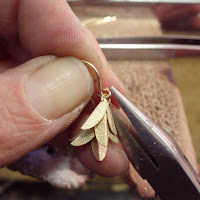What is Pattern?
What exactly is this all-pervasive phenomenon called pattern? There are several definitions of on offer, each with its own particular bias; a truly universal definition is hard to come by. Padwich and Walker, who concern themselves with surfaces only, limit pattern to something ‘based on a design that is repeated in two dimensions.’(1) E.H. Gombrich provides the somewhat loose description of ‘an ordering of elements by identity and difference.’(2) Mary Harris calls it ‘the systematic repetition of a motif.’(3) Something about the simplicity of the last definition rings true for me, except for the word ‘motif’, especially as the significance of pattern really lies in its underlying structure, its essence; the manner in which shapes, things, and events are repeated is more important than the objects of repetition themselves. I suggest therefore, that this definition be truncated to ‘systematic repetition’, thus providing a more universal definition.
 This systematic repetition can apply to anything, in any number of dimensions. It can be the repetition of flowers on a wallpaper design, or of equilateral triangles in a geodesic dome. It can be repetition of number, as in the lunar cycle. It can be the repetition of a movement, a behaviour, or a sound. In short, repetition always results in pattern of some description.
This systematic repetition can apply to anything, in any number of dimensions. It can be the repetition of flowers on a wallpaper design, or of equilateral triangles in a geodesic dome. It can be repetition of number, as in the lunar cycle. It can be the repetition of a movement, a behaviour, or a sound. In short, repetition always results in pattern of some description.This repetition can work itself into a finite, or ‘closed order’ pattern, (4) such as the circular musical note pattern shown above. Or it can be of the ‘unlimited translation’ type, (5) as in this tiled pattern from Topkapi Palace, Istanbul. (6) The latter type of pattern has the capacity for infinite expansion based on a given set of structural rules. In this sort of pattern, one experiences a glimpse of infinity.
1. Padwick, R. and Walker, T. Pattern: Its Structure and Geometry, Ceolfrith Press, Sunderland 1977 p. 3
2. Gombrich, E.H. The Sense of Order: A Study in the Psychology of Decorative Art, Phaidon Press Limited, Oxford 1984 p. 72
3. Harris, M. 'Symmetry and Dissymmetry in Mathematics Education: One View from England' in Leonardo vol. 23, no. 2/3 1990 p. 221
4. Gombrich p. 74
5. Ibid.
6. Padwick and Walker p. 5




